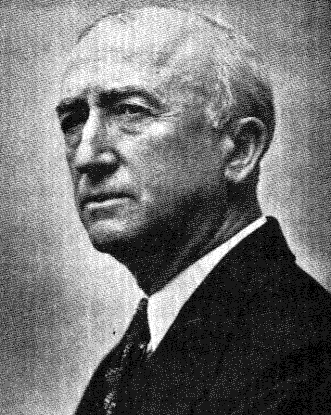
- Mr. Byrnes is one of the few public servants to have served in all three branches of federal government. He served in the executive branch as the Assistant President (Director of Economic Stabilization and Director of War Mobilization); in the judicial branch, Mr. Byrnes was appointed to the US Supreme Court; and in the legislative branch, he served in both the US House of Representatives and the US Senate.
- As a stenographer and House member, Mr. Byrnes learned one important lesson: “In relationships in life, happiness and success can be achieved only by a willingness to make concessions.”
- When President Franklin D. Roosevelt appointed Mr. Byrnes as Director of War Mobilization, he gave him more authority than had previously been delegated to any public official. The appointment gave Mr. Byrnes “power to originate policies and lay out programs that would coordinate the work of all the war agencies and federal departments in any way connected with the production, procurement, transportation and distribution of both civilian and military supplies.”
- Mr. Byrnes met with the scientists who developed the atomic bomb to discuss government policy concerning the bomb. The meeting occurred at the request of Dr. Albert Einstein and took place in Spartanburg, SC. Present at the meeting were many scientists who were concerned about how the government planned to use nuclear weapons.
- Mr. Byrnes believed that it was better to keep talking with the Soviets to make a “step by step progress towards peace” than to cut all connections and increase the risks of total war. Strength and power, Mr. Byrnes believed, are no substitutes for peaceful negotiations.
- Mr. Byrnes was considered as a possible running mate for President Roosevelt in the 1944 election.
- As Director of War Mobilization, Mr. Byrnes was responsible for ensuring that the Manhattan (nuclear bomb) Project had top priority as far as men and material were concerned. The project required the services of 100,000 men.
- En route to Potsdam in 1945, President Truman and Secretary of State Byrnes were not allowed to fly on the same plane because, there being no Vice President at the time, Byrnes was successor in the event of the President’s death.
- As Governor,of South Carolina, Mr. Byrnes greatly improved the state’s hospital for the mentally ill. He initiated a building program. He also began a program for the training of mentally-handicapped black children.
- Mr. Byrnes once said that he shared Tolstoy’s philosophy: “The sole meaning of life is to serve humanity.”
- Mr. Byrnes was the 24th inductee into the South Carolina Hall of Fame. He was enshrined posthumously on January 11, 1982.
- Mr. Byrnes was Time magazine’s Man Of The Year in 1946.
- The S.C. General Assembly proclaimed June 12, 1999, as James F. Byrnes day statewide in celebration of 50 years of Byrnes Scholarship awards.
